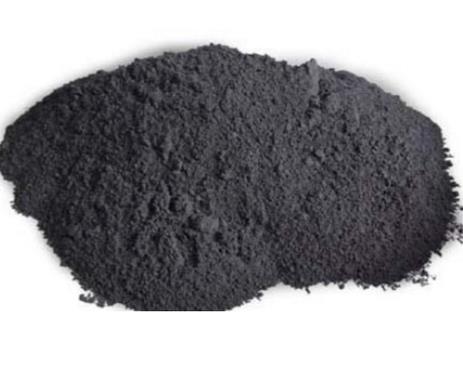- Home
- Products
- Elementary
- Boride Powder
- 3D Printing Powder
- Sulfide Powder
- Oxide Powder
- Carbide powder
- Nitride Powder
- Silicide Powder
- Hydride Powder
- Telluride Powder
- Selenide Powder
- Stearic Acid Series
- Phosphide Powder
- Nanoparticles
- Metal Alloy
- MAX Phase
- Lithium Battery Anode
- Surfactant
- Molecular sieves
- Concrete Admixtures
- News
- Answers
- Contact
- About
News
- 0
- 0
What is BAM AlMgB14 Powder?
If you are looking for high-quality products, please feel free to contact us and send an inquiry, email: brad@ihpa.net
OPEC+ is likely to stick to its plan for a small increase in oil BAM powder will continue to be influenced by the oil supply shortage.
Introduction to BAM AlMgB14 Powder
Magnesium aluminum boride or Al3Mg3B56, commonly known as BAM, is a compound of aluminum, magnesium, and boron. Its nominal molecular formula is AlMgB14, and its chemical composition is closer to Al0.75Mg0.75B14.
It is a ceramic alloy with very high wear resistance and very low sliding friction coefficient, achieving a record value of 0.04 in the unlubricated state and 0.02 in the lubricated AlMGB14-TiB2 composite.
First reported in 1970, BAM has an orthogonal structure with four icosahedral B12 units per cell. The coefficient of thermal expansion of this super-hard material is comparable to that of other widely used materials such as steel and concrete.
Physicochemical Properties of BAM AlMgB14 Powder
Structure
Most super-hard materials have simple, highly symmetrical crystal structures, such as diamond cubes or sphalerite. BAM, however, has a complex, low-symmetry crystal structure, with 64 atoms per cell. The crystal cell is orthogonal and its most prominent feature is four boron-containing icosahedrons. Each icosahedron contains 12 boron atoms. The other eight boron atoms connect the icosahedron to the other elements in the cell. The occupancy of metal sites in the lattice is less than 1, so while the material is usually identified by the molecular formula AlMgB14, its chemical composition is closer to Al 0.75 Mg 0.75 B14. Such non-stoichiometry is common for borides (see boride and boron carbide crystal structures for boron-rich metals). The cell parameters of BAM are a = 1.0313 nm, B = 0.8115 nm, C = 0.5848 nm, Z = 4 (four structural units per cell), space group Imma, Pearson symbol oI68, and density 2.59 g/cm 3. The melting point is roughly estimated at 2000 °C.
Photoelectric
BAM has a bandgap of about 1.5 eV. Resistivity depends on sample purity and is about 10^4Ohm·cm. The Seebeck coefficient is relatively high, between -5.4 and -8.0 mV/K. This property results from the transfer of electrons from metal atoms to the boron icosahedron, which is beneficial for thermoelectric applications.
Hardness and fracture toughness
The microhardness of BAM powders is 32-35GPa. It can be increased to 45GPa by nitrization with boron-rich titanium alloy, and the fracture toughness can be improved by TiB2 or by deposition of quasi-amorphous BAM films. Adding AlN or TiC to BAM its hardness will decrease. Hardness values above 40GPa make BAM super hard by definition. In BAM-TiB2 composites, the maximum hardness and toughness are achieved at about 60 vol.% TiB2. By increasing TiB 2 content to 70-80%, the wear rate was improved at the expense of about 10% hardness loss. The titanium B2 additive itself is a wear-resistant material with a hardness of 28-35gpa.
Thermal expansion
The thermal expansion coefficient (TEC, also known as thermal expansion coefficient, COTE) of AlMgB14 was measured as 9 × (10^-6) (K^-1) by expansion measurements and high-temperature X-ray diffraction using synchrotron radiation. This value is fairly close to the COTE of widely used materials such as steel, titanium, and concrete. Based on the reported AlMgB14 hardness value and the material used as the wear-resistant coating itself, the COTE of AlMgB14 can be used to determine the coating application method and the performance of the parts after use.
Friction
The composite of BAM and TiB2 (70 % of TiB2 by volume) has one of the lowest friction coefficient values, ranging from 0.04-0.05 in the dry scraping of diamond tips and reduced to 0.02 in water glycol-based lubricants.
| BAM AlMgB14 Powder Properties | |
| Other Names | Magnesium aluminum boride, Al3Mg3B56, BAM, AlMgB14 |
| Molecular Weight | 202.64 |
| Appearance | gray to black powder |
Aluminum Magnesium Boride BAM AlMgB14 Powder
BAM AlMgB14 Powder Application
BAM is commercially available and is studying potential applications.
For example, pistons, seals, and blades on pumps can be coated with BAM or BAM + TiB2 to reduce friction between parts and increase wear resistance. Reducing friction will reduce energy use. BAM can also be coated on cutting tools. The reduced friction will reduce the force required to cut objects, extend tool life, and possibly increase cutting speed. Coatings only 2-3 microns thick have been found to improve cutting tool efficiency and reduce wear.
BAM AlMgB14 Powder Price
The price is influenced by many factors including the supply and demand in the market, industry trends, economic activity, market sentiment, and unexpected events.
If you are looking for the latest BAM AlMgB14 powder price, you can send us your inquiry for a quote. ([email protected])
BAM AlMgB14 Powder Supplier
Luoyang Tongrun Nano Technology Co. Ltd. (TRUNNANO) is a trusted global chemical material supplier & manufacturer with over 12-year-experience in providing super high-quality chemicals and Nanomaterials, including silicon powder, nitride powder, graphite powder, zinc sulfide, calcium nitride, 3D printing powder, etc.
If you are looking for high-quality BAM AlMgB14 Powder, please feel free to contact us and send an inquiry. ([email protected])
The current international situation is highly uncertain, and its economic impact has not been able to be assessed properly. In addition, rising energy and commodity prices and supply chain disruptions are expected to push the price of the BAM powder higher.
Inquiry us